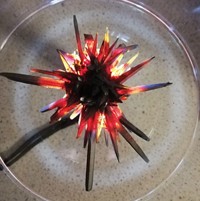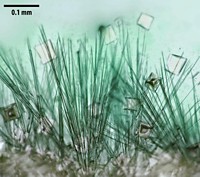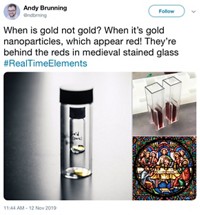Advertisement
Grab your lab coat. Let's get started
Welcome!
Welcome!
Create an account below to get 6 C&EN articles per month, receive newsletters and more - all free.
It seems this is your first time logging in online. Please enter the following information to continue.
As an ACS member you automatically get access to this site. All we need is few more details to create your reading experience.
Not you? Sign in with a different account.
Not you? Sign in with a different account.
ERROR 1
ERROR 1
ERROR 2
ERROR 2
ERROR 2
ERROR 2
ERROR 2
Password and Confirm password must match.
If you have an ACS member number, please enter it here so we can link this account to your membership. (optional)
ERROR 2
ACS values your privacy. By submitting your information, you are gaining access to C&EN and subscribing to our weekly newsletter. We use the information you provide to make your reading experience better, and we will never sell your data to third party members.
Synthesis
Chemistry In Pictures
Chemistry in pictures
March 21, 2016
| A version of this story appeared in
Volume 94, Issue 12

Swiss artist Fabian Oefner created a stunning series of watercolors called “Millefiori” with the help of magnetism. He simply added bright watercolors on top of a small dish filled with an oozy black magnetic substance called ferrofluid—a mixture containing oil and nanoparticles of magnetic substances such as iron oxides. When Oefner runs a magnet under the dish, the nanoparticles get magnetized, pushing and pulling each other around such that the ferrofluid creates peaks (black ridges and dots poking out of the paint) and valleys (troughs holding the paint). Even in these small droplets, which are about 1 cm wide, the oil and water don’t mix, resulting in the division of the watercolors and oily ferrofluid. —Manny Morone

In a double-displacement reaction, two sets of ionic chemical pairs switch partners. The reaction of silver nitrate with sodium chloride forms a white solid because, although both starting materials are very soluble in water, silver chloride, one of the products, is mostly insoluble. As silver chloride forms, it crashes out of solution, clouding the liquid. Meanwhile, soluble NaNO3, the other product, stays dissolved. Here is the full chemical reaction: AgNO3 (aqueous) + NaCl (aqueous) → AgCl (solid) + NaNO3 (aqueous) This photograph is from a series of illustrated chemical demonstrations available at beautifulchemistry.net. —Craig Bettenhausen

Reader Kylie Jespersen bought this bismuth crystal at a Little America gift shop in Wyoming. “When I saw it, I was so excited and I knew I had to get one,” she says. “It was the very first pure element that I had found.” Bismuth’s stepped crystallization patterns, iridescent colors, affordable price, and low toxicity make it a popular start to many element collections. —Craig Bettenhausen
To enter our photo contest, visit cen.chempics.org or e-mail CENChemPics@acs.org.





Join the conversation
Contact the reporter
Submit a Letter to the Editor for publication
Engage with us on Twitter